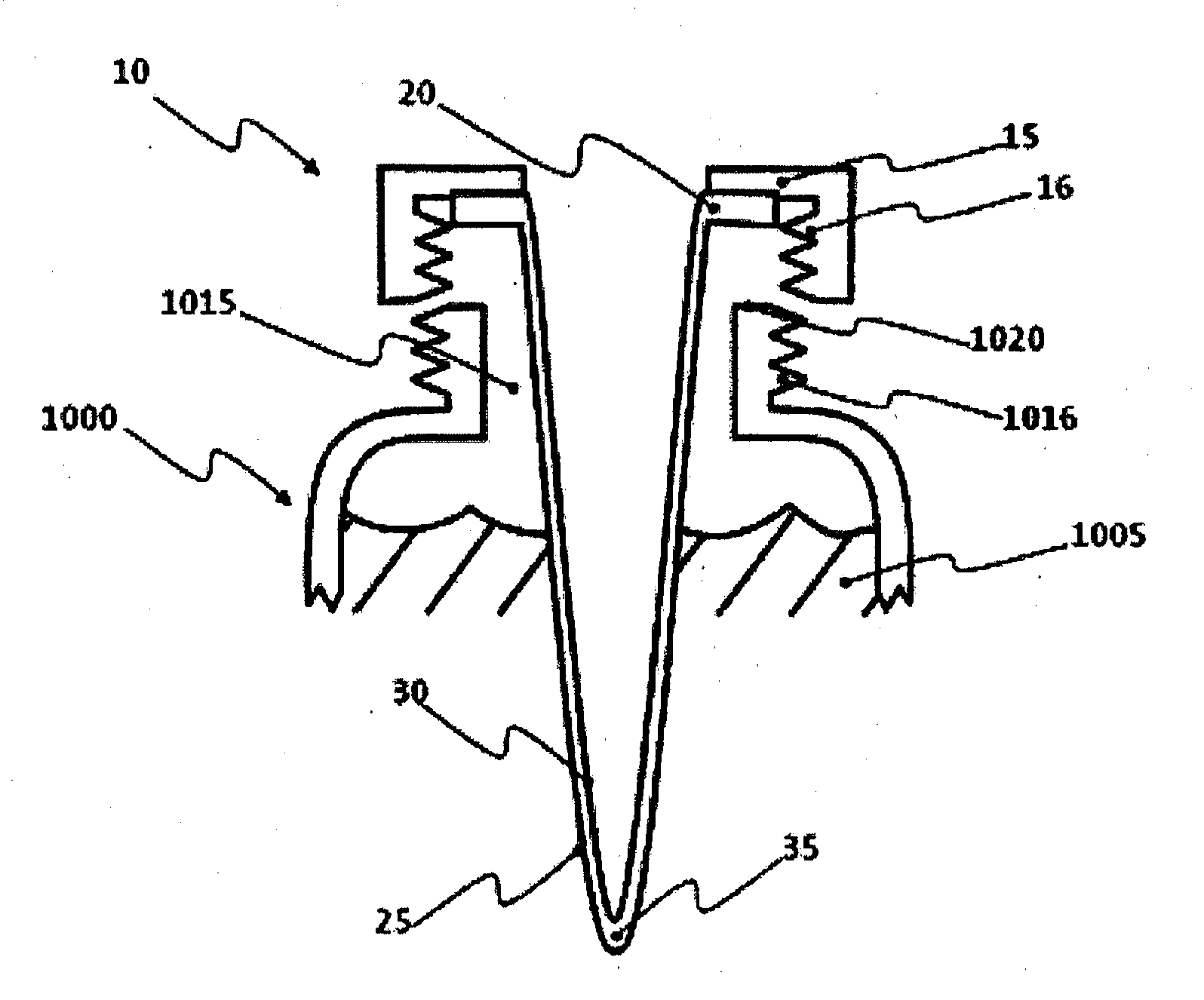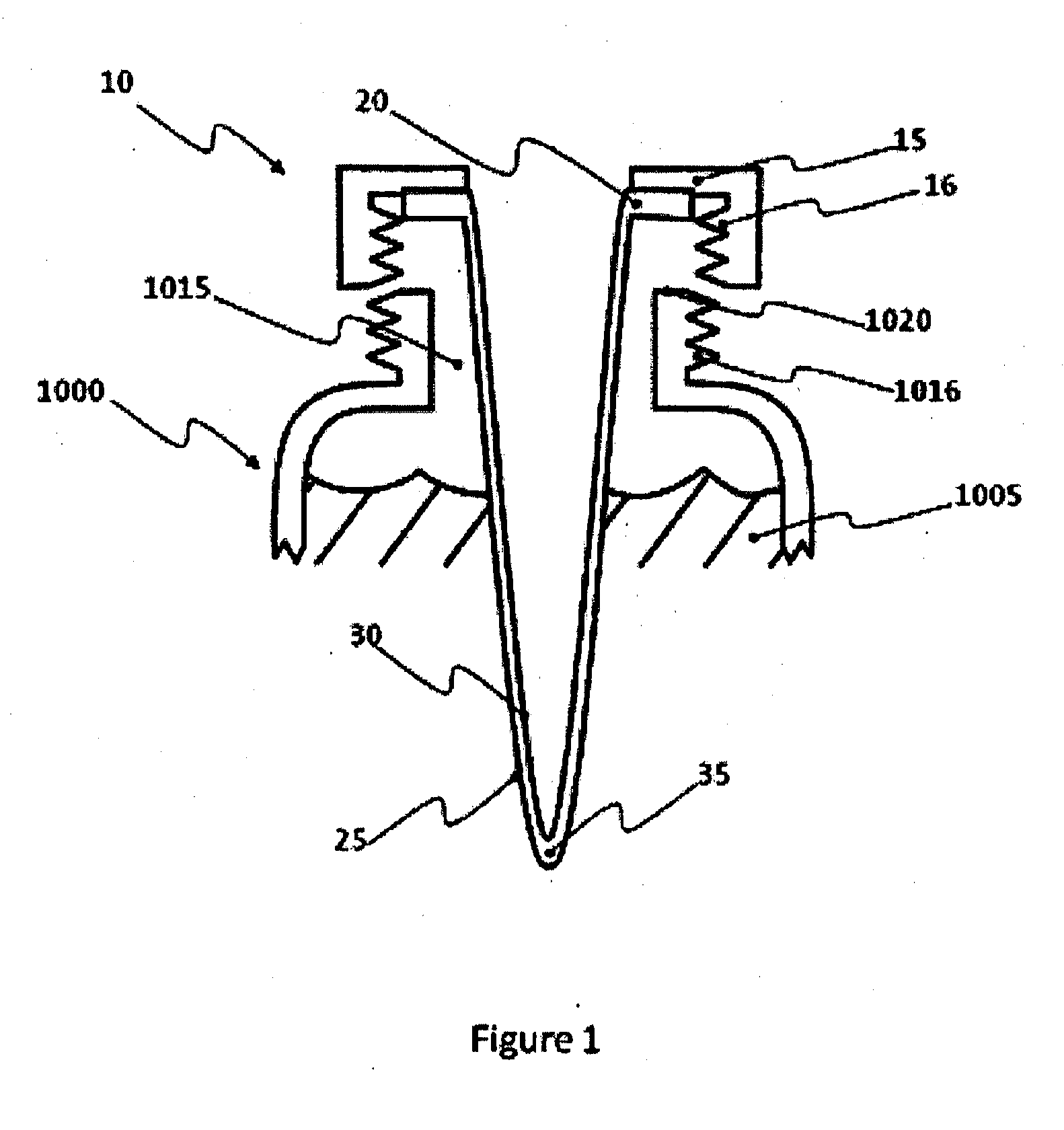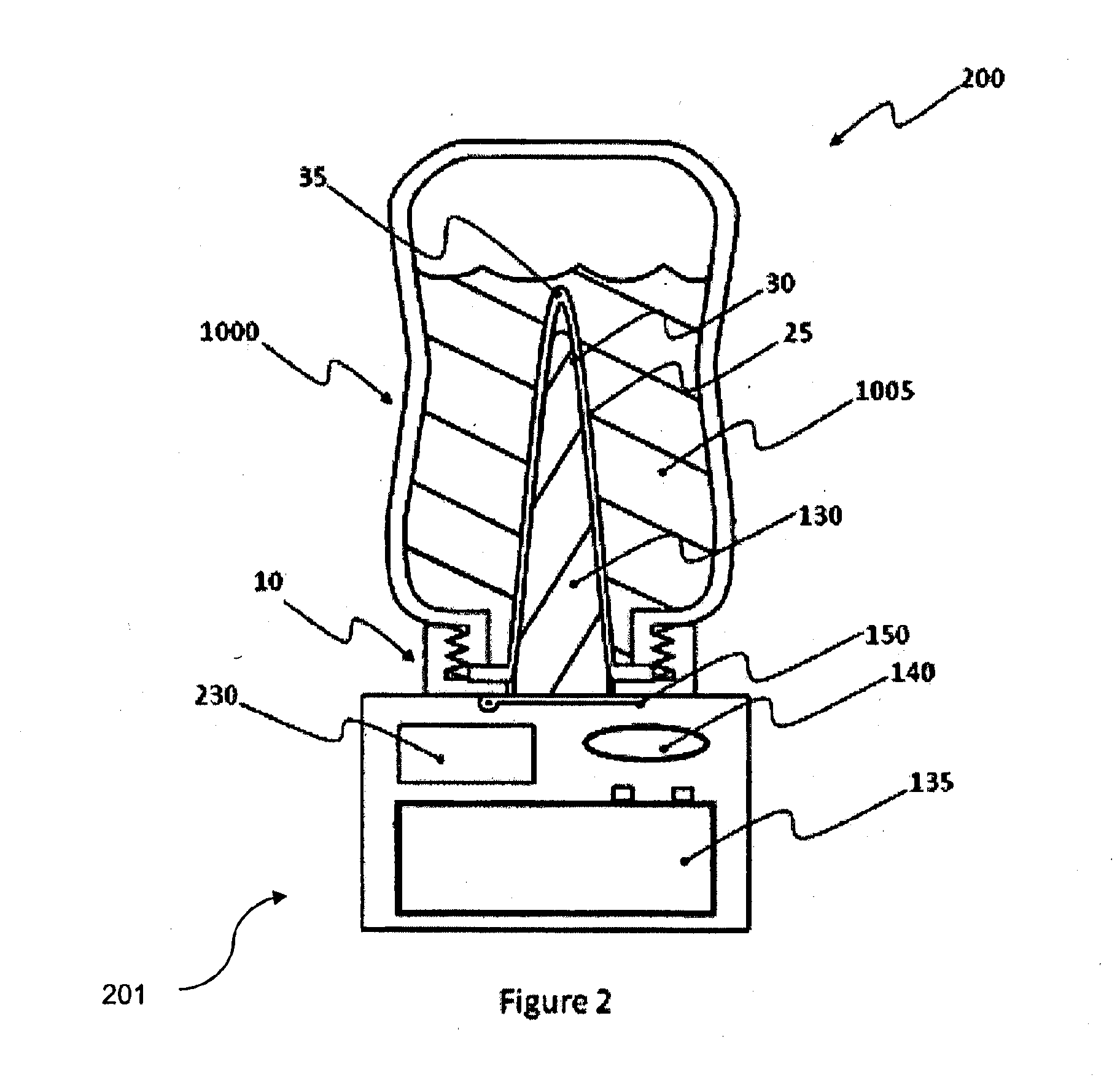Heat Transfer Apparatus and Container
a heat transfer apparatus and container technology, applied in the direction of containers, domestic articles, packaged goods, etc., can solve the problems of inability to heat up in time, slow method of heating, and hot spots in the volume of liquid, so as to facilitate the liquid making contact, inhibit inadvertent overheating, and increase the heat transfer rate
- Summary
- Abstract
- Description
- Claims
- Application Information
AI Technical Summary
Benefits of technology
Problems solved by technology
Method used
Image
Examples
Embodiment Construction
[0101]It should be noted in the following description that like or the same reference numerals in different embodiments denote the same or similar features.
[0102]Referring to FIG. 1, in accordance with one embodiment of the present invention, a closure 10 for transferring heat to a liquid 1005 in a container 1000 in use is provided. In this embodiment, the container 1000 is a baby bottle suitable for holding baby feed such as milk, that is suitable for heating to, for example, a body temperature of approximately 37° C., before being fed to a baby. In other embodiments, however, the container 1000 may be arranged for other purposes and / or to hold other liquids such as for example blood, which is held in flexible-walled bags. In the embodiment shown in FIG. 1, the closure 10 comprises an overcap 15 having an engagement arrangement 16 to engage a cooperative engagement arrangement 1016 of the container 1000 immediately adjacent to an opening 1015 of the container 1000 such that the liq...
PUM
 Login to View More
Login to View More Abstract
Description
Claims
Application Information
 Login to View More
Login to View More - R&D
- Intellectual Property
- Life Sciences
- Materials
- Tech Scout
- Unparalleled Data Quality
- Higher Quality Content
- 60% Fewer Hallucinations
Browse by: Latest US Patents, China's latest patents, Technical Efficacy Thesaurus, Application Domain, Technology Topic, Popular Technical Reports.
© 2025 PatSnap. All rights reserved.Legal|Privacy policy|Modern Slavery Act Transparency Statement|Sitemap|About US| Contact US: help@patsnap.com



